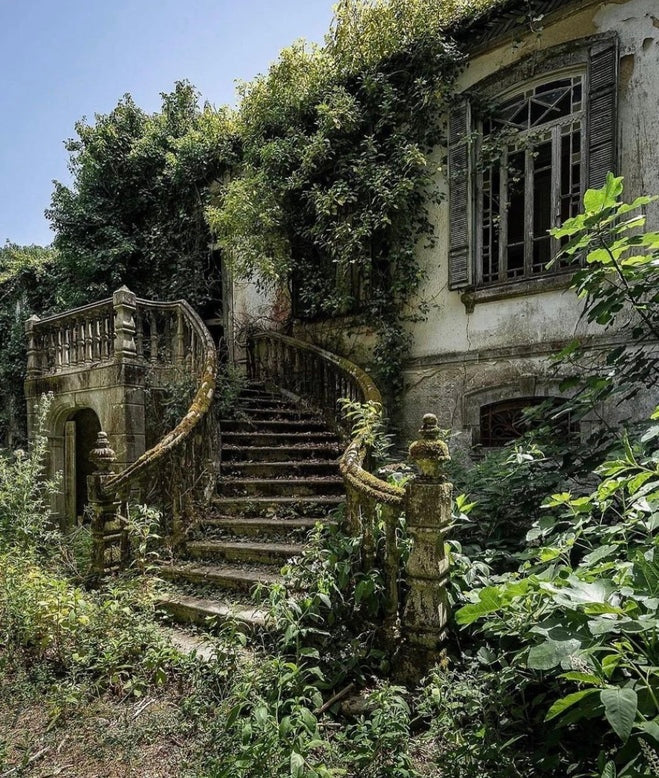Discover the Top 10 Abandoned Places in Minneapolis: explore eerie, historic locations perfect for urbex enthusiasts and lovers of mystery.
Minneapolis, known for its vibrant arts scene, beautiful lakes, and rich industrial history, is also home to several abandoned places that offer a unique look into the city’s past. From decaying mills and factories to forgotten theaters and schools, these locations tell the story of Minneapolis' evolution. Here are 10 of the most captivating abandoned places in Minneapolis for urban explorers and history enthusiasts.
1. Mill Ruins Park
Once the heart of Minneapolis’ flour milling industry, Mill Ruins Park showcases the crumbling remains of the flour mills that powered the city's growth in the late 19th and early 20th centuries. Abandoned after the decline of the milling industry, the area has been preserved as a public park, with visible ruins of the old mills, stone foundations, and water channels. It's a unique blend of history and decay, perfect for exploring.
2. Washburn A Mill
Located within Mill City Museum, the Washburn A Mill was one of the largest flour mills in the world during its operation. After a devastating explosion in 1878 and subsequent reconstruction, the mill was eventually abandoned in the 1960s. Today, parts of the mill remain in a state of controlled decay, with charred beams and rusting machinery, offering a fascinating glimpse into Minneapolis’ milling history.
3. Pillsbury A-Mill
The Pillsbury A-Mill, once the largest flour mill in the world, was built in 1881. Although the mill ceased operations in 2003, its massive stone structure still stands along the banks of the Mississippi River. While parts of the building have been repurposed into artist lofts, some sections remain abandoned, with crumbling walls and rusting equipment showcasing its industrial past.
4. Upper Harbor Terminal
Located on the banks of the Mississippi River, the Upper Harbor Terminal was once a major shipping hub for Minneapolis. After being decommissioned in the early 2000s, the area was left abandoned, with empty warehouses, rusting cranes, and overgrown docks. Plans for redevelopment are underway, but the terminal remains a hauntingly beautiful industrial relic for the time being.
5. Schmidt Brewery (Old Sections)
While parts of the historic Schmidt Brewery in nearby St. Paul have been redeveloped, some sections of the old brewery remain abandoned. The brewery, which operated for over a century, has decaying vats, rusting pipes, and crumbling brick buildings, making it a fascinating spot for urban explorers interested in Minnesota’s brewing history.
6. Minneapolis Armory (Old Sections)
While the Minneapolis Armory has been restored and repurposed as an event venue, sections of the building were long abandoned, with broken windows, peeling paint, and empty training facilities. The Armory, built in 1935, once served as a military training facility and later a venue for concerts and events, offering a glimpse into Minneapolis’ military and entertainment history.
7. Riverside Hospital
Riverside Hospital, which opened in 1887, was one of the oldest hospitals in Minneapolis. After merging with a larger healthcare system, the original hospital building was left abandoned for years before being partially demolished. The remaining portions of the building, with crumbling walls and empty patient rooms, evoke a sense of eerie desolation and offer a haunting look at the city’s medical past.
8. Northrup King Building (Abandoned Sections)
The Northrup King Building, a massive industrial complex in Northeast Minneapolis, was once home to a major seed company. While part of the building has been transformed into an art center, several areas remain abandoned, with broken windows, graffiti-covered walls, and decaying industrial spaces. The mix of decay and revitalization makes it an intriguing destination for both art lovers and urban explorers.
9. Hollywood Theater
The Hollywood Theater, located in the Northeast neighborhood, opened in 1935 and closed in 1987. Since then, the Art Deco-style building has remained largely abandoned, with its once-glamorous interior now in a state of disrepair. Efforts to restore the theater have been ongoing, but the decaying marquee, crumbling seats, and empty projection rooms give it a haunting, nostalgic atmosphere.
10. Bunge Grain Elevator
The Bunge Grain Elevator, located near the Mississippi River, was once used to store and transport grain. After being abandoned in the late 20th century, the massive concrete structure was left to the elements. The towering silos, rusting metal equipment, and empty storage areas offer a post-apocalyptic feel, making it a popular spot for urban explorers and photographers.
Discover the best abandoned places with our maps !
Are you looking for the best urbex locations near you? Look no further! Whether you're a seasoned urban explorer or a curious hobbyist, our maps are full of abandoned places to explore. Discover our Maps !












